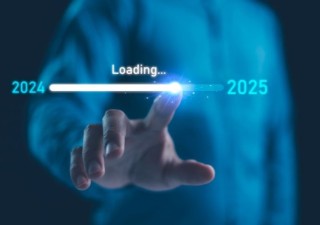Human versus machine consciousness
31 May 2025

In the book What is Life, written in 1944 by theoretical physicist Erwin Schrödinger, the author states: “A scientist is supposed to have a complete and thorough knowledge, at first hand, of some subjects and, therefore, is usually expected not to write on any topic of which he is not a master. This is regarded as a matter of noblesse oblige. For the present purpose I beg to renounce the noblesse, if any, and to be freed of the ensuing obligation. My excuse is as follows:
“We have inherited from our forefathers the keen longing for unified, all-embracing knowledge. The very name given to the highest institutions of learning reminds us, that from antiquity and throughout many centuries the universal aspect has been the only one to be given full credit. But the spread, both in width and depth, of the multifarious branches of knowledge during the last hundred odd years has confronted us with a queer dilemma. We feel clearly that we are only now beginning to acquire reliable material for welding together the sum total of all that is known into a whole. But, on the other hand, it has become next to impossible for a single mind fully to command more than a small specialized portion of it.
I can see no other escape from this dilemma (lest our true aim be lost for ever) than that some of us should venture to embark on a synthesis of facts and theories, albeit with second-hand and incomplete knowledge of some of them – and at the risk of making fools of ourselves.”
The whole subject of consciousness is complex and extensively commented upon by mind philosophers, neuroscientists, artificial intelligence experts, quantum physicists, religious leaders and many others.
So much is known and yet so little and I, therefore, offer an apology for venturing in a field of which I have little knowledge, but a whole lot of curiosity.
What is consciousness?
The simplest definition appears to be ‘self awareness’. The classic questions are:
-
Do humans alone enjoy consciousness?
-
Do living things including animals and plants enjoy consciousness?; or
-
Do inanimate objects like rocks and machines (AI) also enjoy consciousness?
On the one hand are restricted theories such as the views of philosopher and computer scientist Bernardo Kastrup who strikes a distinction between consciousness and intelligence with the view that computers can be intelligent, perhaps more intelligent than humans, but can never have consciousness as they will never have an inner experience.
Physicist and engineer Federico Faggin in the book Irreducible points to a distinction between semantic reality and the law on symbols and examines whether consciousness emerges from the functioning of the brain. He states consciousness is the ability to experience through qualia and to know the meaning of the experience. Qualia are the private sensations and feelings that reveal the meaning of the experience to the entity.
On the other hand, according to Hinduism, Buddhism and other Eastern philosophies, consciousness can exist even in inanimate objects. Western thinkers have often thought of such ideas as pseudoscience, but interestingly, what appeared to be absurd at one point of time in history, was proven to be a scientific fact at a future date. For example, Newton’s physics got rewritten by Einstein’s theory of relativity and gravity, once thought to be a force was transformed into the idea of space time curvature.
Many such examples can be given which demonstrate how new discoveries keep transforming old ideas.
Then comes quantum physics according to which a particle may exist in a dual state and its state can only be determined upon being observed. Two entangled particles separated by an infinite distance can still be quantum entangled so that a prediction relating to the first will automatically result in the prediction for the second, thus contradicting Einstein’s theory that communications cannot travel faster than light. So, if the particles do not communicate with each other, how can one affect the other. Einstein called it “spooky action at a distance”.
The relatively new field of panpsychism postulates that consciousness resides in everything. Thus, if you look at a flock of starling birds in murmuration, you can see they move in the skies without colliding with each other. Research shows that there is no leader, then how else do they communicate in split seconds and coordinate their movement. It is an incredible achievement which can only be explained by the existence of some external force which is guiding them.
What can we call this external forces? Some may regard it as a consciousness.
What about the manner in which the mycelial roots of a plant exchange nutrients? One view is to call this intelligence; another view is to regard it as some remarkable force of which we know so little. Could this be consciousness?
Similarly, a school of fish move together.
According to the second law of thermodynamics, all systems move from a state of order to a state of disorder. This is known as entropy. However, there are a huge number of cases when systems move from disorder to order – negative entropy, as Schrödinger called it. Thus, an atom combines with another atom to form a molecule, and the molecule joins to form DNA and from the DNA, cell, tissue, bones and a human body. In this way, certain things are moving from a state of disorder into order. This appears to be opposed to the second law of thermodynamics.
The concepts in question are less complex versus more complex systems or even intelligence or consciousness.
How is it that dead molecules suddenly get life into them? It is almost like some unexplained form of energy breathes life into the molecule and makes them live.
How is it that the routers on the internet form a network? Some force pushes them into this unified action.
How is it that the neurons in the brain interact with each other? Again, some force pushes them.
How is it that the galaxies are said to interact?
Philosopher and scientist René Descartes came up with the concept of ‘Duality’, contrasting body and mind. According to one thinking, consciousness is not just restricted to the brain but existed from the very birth of the universe. This thought is propounded by Buddhist, Hindu and Jain philosophies.
AI systems
If one asks who is the person for the purpose of owning intellectual property (or any property for that matter), or even who can be an author or an inventor, the constitutional cases in India have recognized non-natural persons such as idols, mountains, rivers, forests and animals, as juridical persons.
Thus, in the celebrated case M. Siddiq v. Mahant Suresh Das (popularly known as the Ram Janam Bhoomi case), the Supreme Court of India recognized that our legal system extends the concept of personality beyond natural persons, through the creation of a juristic person. Two examples of this paradigm were the collection of natural persons which has been conferred a distinct legal personality (for example, a corporation or a cooperative society) and where legal personality is conferred on an inanimate object like a ship. Legal personality may even be conferred on an abstract idea.
The reasons given for conferring legal personality on objects is that the ultimate beneficiaries of the benefits would not be the artificial person, but a natural person. It is, therefore, convenience as also to subserve the purpose of business certainty and expedience that such a concept has been recognized. The court states in paragraph 100: “The conferral of legal personality was thus a tool of legal necessity and convenience. Legal personality does not denote human nature or human attributes. Legal personality is a recognition of certain rights and duties in law. An object, even after the conferral of legal personality, cannot express any will but it represents certain interests, rights, or benefits accruing to natural persons. Courts confer legal personality to overcome shortcomings perceived in the law and to facilitate practical adjudication. By ascribing rights and duties to artificial legal persons, the law tackles and fulfils both necessity and convenience.”
So consciousness, if defined in the strict sense of self awareness, may not reside in a machine or in artificial intelligence. However, if consciousness is defined as a force which brings order to disorder and which injects life into systems, then any entity which reacts to an external stimulus, can be set to have consciousness.
Philosopher Henri Bergson’s concept of ‘Elan Vital’ is a non-physical driving force vital in shaping life.
One view in panpsychism has been that consciousness is like heat where the temperature of something may be low and some high. Similarly, some objects have very low consciousness while others have a higher level of the same. It does boil down to how we define consciousness.
According to the integrated information theory (IIT) propounded by neuroscientist Giulio Tononi, consciousness is not just about the individual parts of a network but how these parts are interconnected and influence each other. The more integrated and interconnected the parts are, the more consciousness the system possesses. This theory offers a unique framework for understanding consciousness, emphasizing the role of integrated information in generating a subjective experience.
Alternatively, if not consciousness, what is this force which makes a neural network work. What is the force by which input data can be understood and pattern extracted from the same to form an artificial intelligence system.
Why must this form of intelligence not be considered to be a form of consciousness, relevant and appropriate for that particular system?
In other words, consciousness of humans may be quite different from consciousness of a machine as also unlike collective consciousness of a flock of birds.
Is there some sense therefore, in trying to marry modern science with some of the ancient philosophies to form a blend that explains these magical concepts? Not necessarily in the language of a scientist, but perhaps in the language of a spiritual scientist.
In conclusion, one might ask why the issue of machine consciousness is at all relevant. Neuroscientist Anil Seth in his book Being You: A New Science of Consciousness explains how the existence of a self-awareness is controlled hallucinations since our brain never sees or hear anything but only receives electrical signals which it interprets. Its perceptions are partly based on external information and partly internal forces.
One view may be that we need not concern ourselves with such complex issues when examining the rights and duties and the legal status of an AI system, machine or robot since necessity and convenience ought to dictate how we treat them.
In contrast, another view can be that one day humans may involve a blend of humans and AI systems like Neuralink and other brain computer interfaces which link human brains directly with AI systems for treating paralysis, enhancing memory, etc.
Also, prosthetics and exoskeletons where AI powered limbs can learn from brain systems or muscle movement and the future of androids and humanoids or cyborgs.
So, the future idea is transhumanism in which human capabilities are enhanced or symbiotic AI where AI and humans work seamlessly together.
A true understanding of consciousness may then become of critical importance.








